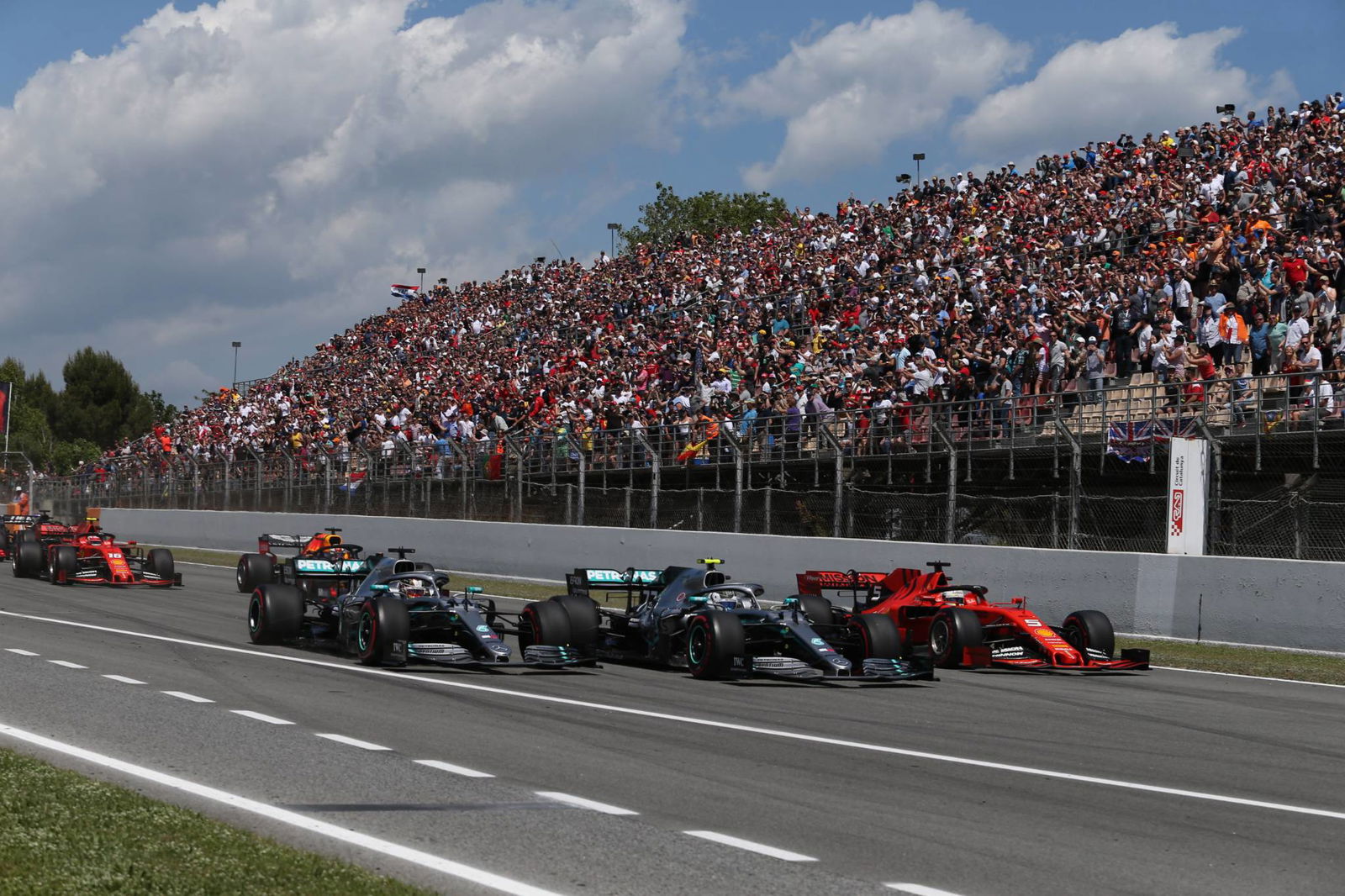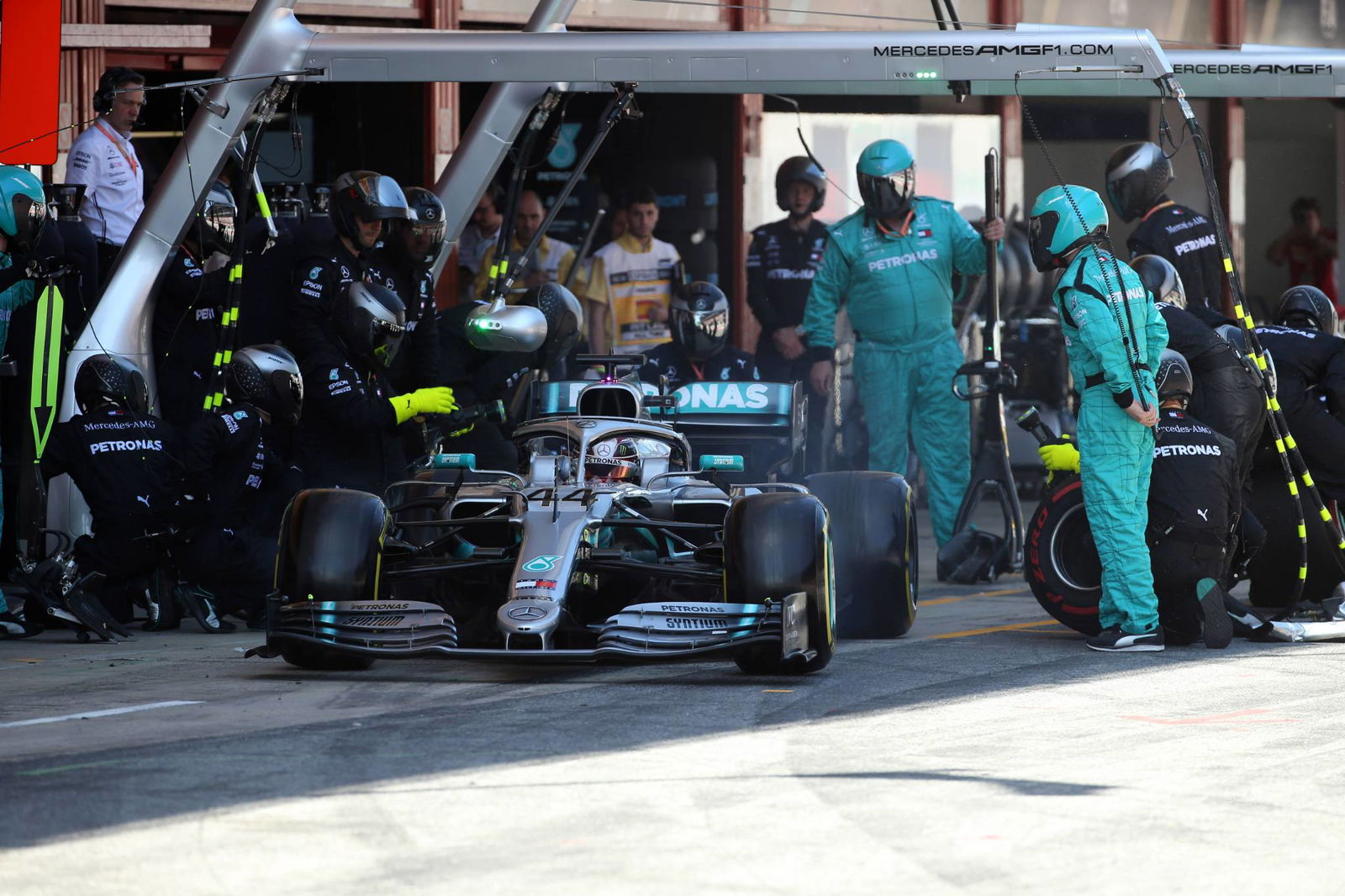F1 Race Analysis: How Mercedes made it five in Spain
We’re close to running out of superlatives when it comes to Mercedes in 2019.
Five races, five one-two finishes, and 217 out of a possible 220 points – or 98.6 percent – with the three that were dropped coming only on the fastest lap bonus in Bahrain, China and Azerbaijan.

We’re close to running out of superlatives when it comes to Mercedes in 2019.
Five races, five one-two finishes, and 217 out of a possible 220 points – or 98.6 percent – with the three that were dropped coming only on the fastest lap bonus in Bahrain, China and Azerbaijan.
We were treated to another masterclass by the German manufacturer on Sunday in Spain as Lewis Hamilton and Valtteri Bottas dominated proceedings, taking a comfortable win. The duo ran P1 and P2 respectively for all 66 laps at the Circuit de Barcelona-Catalunya, with there being only two real moments where their dominance looked at even a slight risk.
The start in Barcelona is one of the most important of the year, given the difficulty in overtaking and the long run down to Turn 1 (the longest of the season). Pole-sitter Bottas was left ruing an “annoying” clutch issue that compromised his start, undoing all of his hard work through the weekend, the highlight being the emphatic charge to pole on Saturday.
Hamilton was able to muscle past Bottas at the first corner despite being on the dirty side of the track, revealing after the race that he’d noticed in the support series that it wasn’t a notable disadvantage.
The threat to Mercedes came from Sebastian Vettel, who managed to make a decent getaway to duke to the outside of the two W10s and sniff at sweeping into the lead – only to flat-spot his front-left tyre.
“I wanted to brake latest, which I think I did, but Valtteri was also quite late so I couldn’t really get in, and I couldn’t see him. I just saw that he was also braking quite late,” Vettel said.
“If I just turned in, which I think I could have managed, then he has nowhere to go and I will go the other way. So it didn’t work. In the end I did Lewis a favour because I distracted Valtteri.
“It was clear that I could not win the race in the first corner but I saw that there was something to try. I tried and it didn’t work, but I was hoping that I could mix things up a little bit for my sake and your sake.”
It was indeed a big favour for Hamilton, with the pincer movement forcing Bottas to back out slightly and drop to third. Not wishing to do too hard on Bottas, Vettel gave him the place back after chopping across the track at Turn 2, which also forced teammate Charles Leclerc to back off slightly and open the door for Max Verstappen to sweep past both Ferraris.

And as is so often the case at this circuit, the start pretty much decided the race. Hamilton was able to bolt clear of Bottas early and kept the gap stable at around three seconds for much of the opening stint, only to then step it up a gear nearing the first round of pit stops as the pair began to hit lapped cars. On Lap 20, Hamilton’s advantage grew from 4.4 seconds to 6.3s, with another second being gained one lap later. Mercedes went against its usual procedure of pitting the lead driver first due to fear of Bottas losing a place to Verstappen, who had come in far earlier for a set of Soft tyres to try and get the undercut.
“In the beginning of the stint I was pretty close to Lewis all the time, and just waiting if there was going to be any opportunity,” Bottas explained. “On this type of track if you’re within four seconds then you start to slide around quite a bit. Once you’re in free air, it’s so much better.
“That’s why the gap became bigger, as that was also when I had to go through some of the slower cars. At the same time the tyres started to drop off and with less tread on the tyres I lost a bit of temperature, so my tyres were finished much earlier than Lewis.”
Bottas came out of the pits only 2.2 seconds clear of Verstappen – the gap had been eight prior to Red Bull’s stop – but was able to increase the margin with a fresh set of Mediums, also save in the knowledge the Dutchman would have to make a second stop. Hamilton followed Bottas into the pits one lap later, also going for a set of Mediums, with his buffer standing at around eight seconds.
Bottas’ second stint was more consistent as he kept the gap to Hamilton stable (and even reduced it to 7.4 seconds before pitting), and by covering off Verstappen – five seconds back before his second stop – the one-two looked to be in the bag.
But then came the second flashpoint that put Mercedes’ dominance at risk. A prang between Lance Stroll and Lando Norris at Turn 2 triggered the Safety Car, meaning all advantages the leaders had built up had been wiped away – something frustrating for Hamilton in particular.
“I can’t remember how big [the gap] was, but it was obviously nice enough, and when Valtteri did the stop it was still quite good,” Hamilton said. “Then I realised that it was going to a two-stop rather than a one-stop, which meant you could then utilise the tyres. And then the Safety Car came out!
“Naturally you’d prefer a VSC, but the Safety Car came out and it was pretty drastic how slow the Safety Car was going. It was hard for all of us to keep the temperature in the tyres.”
Hamilton was pitted in reaction to the Safety Car, retaining his track position, and had a set of used Soft tyres (albeit only three laps old) fitted, mirroring Bottas’ tyre choice. But with Verstappen, Vettel and Leclerc now bunched behind and all pretty healthy on tyre life, the heat was on Mercedes.

But as the team has done at every point so far this season, it remained faultless. Hamilton perfected his restart with Bottas in tow, with two massive laps to start the final run to the flag allowing the gap to open up to almost five seconds. Game over.
“We just stayed cool and focused on the restart,” Hamilton explained. “It’s pretty straightforward here doing the restart, so there wasn’t an issue.
“I think within one or two laps I was already up five seconds. Then I backed off to cool the tyres down a little bit and to give myself an opportunity to fight for the fastest lap. I still had time left, but I was grateful that I had the fastest lap at the time and didn’t need to push again and the team told me to push the engine down. It was good after that.”
Bottas also never looked at risk of losing a place to Verstappen, who in turn didn’t have too much bother from the Ferraris behind (Vettel’s bigger concern was Gasly, who angled for a pass on the restart) meaning the drivers finished in the order in which they exited Turn 1.
Hamilton said after the race that he was pleased to have recovered so emphatically after struggling in qualifying.
"The balance yesterday was a bit of a nightmare, but the race pace has generally been quite good for me. I’ve been quite happy and comfortable in the races," Hamilton said.
"When we went out to do the laps to the grid, I wasn’t very happy with the balance still, so I had to make some changes. I had to alter my driving style a little bit. It worked well in the race scenario.
"I’m going to look into why it doesn’t work on a single lap, and that may take some time. Normally on tyres I’m pretty good, but I think that’s the weak area. It’s not that I can’t do it, I’ve just got to discover it, and that’s what I’m moving towards."
Even with some challenges this weekend, Mercedes retained its dominance through slick, silver service.
Simply building on something it has made itself so renowned for over the past five-and-a-bit seasons.


